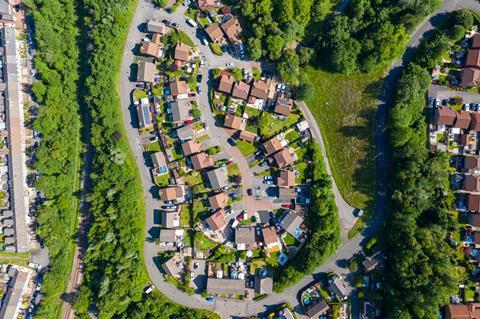Housing secretary says communities will be at heart of new system in which land is zoned for automatic permission
Far-reaching proposals to overhaul the planning system have been published in a move which looks set to remove from local authorities their right to determine many individual planning applications.
The proposals are being put forward in a white paper, Planning for the Future, which were published at midnight last night.

The new system is set to propose that local authorities will draw up local plans designating all land in their areas as being either for “growth”, “renewal” or “protection”. Sites zoned for growth will receive automatic permission if developers adhere to locally drawn up design guides.
A statement from the housing ministry released in advance of publication of the white paper said communities will be consulted from the very beginning of the planning process and that the system will offer a “fast-track” for beautiful schemes.
It said that green spaces will be protected by allowing for more building on brownfield land and that the categories for all land across England would be “decided through local consensus”.
Under the system, local authorities will be required to draw up the all-important local plans in 30 months, down from an average of seven years currently.
But, in advance of publication of the white paper, it was not clear what would happen to local authorities that failed to do this, what any transitional arrangements will be and who will be given the job of determining whether developments meet locally-set standards.
Currently only 50% of local areas have an up-to-date local plan in place, despite being already required to do so. Current Green Belt protections will remain, the statement said.
Part of the aim, it said, was to set up a clearer, rules-based system as currently around a third of planning cases that go to appeal are overturned.
The new proposals also include a national levy to replace the current system of developer contributions.
Section 106 agreements and the Community Infrastructure Levy will be replaced with a new infrastructure levy that will be a fixed proportion of the value of the development, above a set threshold, helping to deliver more affordable housing.
Revenues will be spent locally on projects such as new roads, upgraded playgrounds and discounted homes for local, first-time buyers.
It will also make it mandatory for all new homes to be carbon neutral by 2050 - the standard the industry was originally supposed to have met by 2016, before the target was scrapped by David Cameron’s government.
Robert Jenrick, housing secretary, said: “As we face the economic effects of the pandemic, now is the time for decisive action and a clear plan for jobs and growth. Our reforms will create thousands of jobs, lessen the dominance of big builders in the system, providing a major boost for small building companies across the country.”
He is also set to confirm the first homes scheme will provide newly built homes at a 30% discount for local people, key workers and first-time buyers.
Decisions on the Green Belt will stay with local authorities as they prepare their plans.
James Thomson, chief executive of Gleeson Homes, said he strongly supported the reforms which he said will bring the planning system up to speed and make it fit for purpose.
He said: “In particular, we welcome initiatives to make it more transparent, speed up planning where appropriate and has a presumption towards development rather than against. The renewed commitment to building 300,000 new homes a year is an important goal and will be aided by these new initiatives.”
But RIBA president, Alan Jones, branded the proposals “shameful” and said they could lead to the creation of the next generation of slum housing. He said: “The housing crisis isn’t just about numbers and deregulation won’t solve it.”
And the Campaign to Protect Rural England also said the plans didn’t pass the “acid test for community involvement”.
Tom Fyans, deputy chief executive of CPRE, said: “On first reading, it’s still not clear how this [community involvement] will work under a zoning system. Although we welcome the government’s commitment to all areas having a local plan in place, we also need robust legal guarantees that the public are consulted regarding new development.
“Red lines on a map are not going to build trust in the planning system. As things stand, the government seems to have conflated digitalising planning with democratic planning.”
He also described the 2050 zero carbon housing target as “pitiful” and said it represented 34 lost years following the abandonment of the original 2016 target.
The National Housing Federation has also raised immediate concerns about the proposal to scrap Section 106 agreements, which it said were the mechanism for delivering about half the affordable housing built each year.




























No comments yet